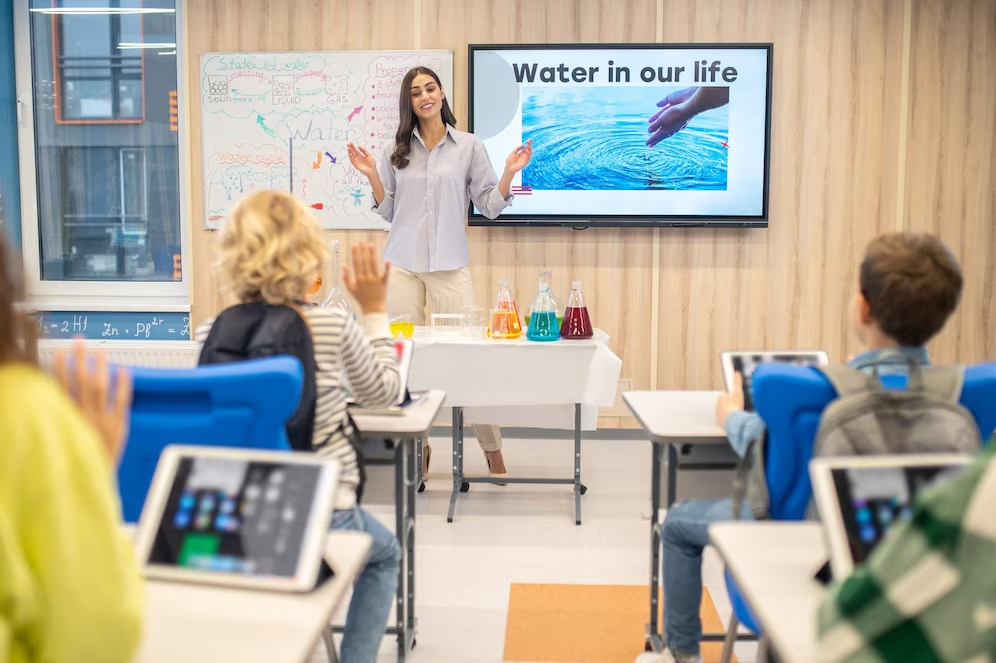
In our fast-paced, tech-driven world, even the education realm isn’t untouched by change. You might be aware of hybrid learning: a synergy of old-school face-to-face teaching and cutting-edge digital tools.
As the world evolves, hybrid learning shines as the new face of education, embracing diversity and fostering inclusivity. Let’s dive into the core of hybrid learning, its perks, and its role in reshaping today’s education.
Hybrid Learning: Overview
Imagine a classroom where in-person interactions seamlessly merge with online educational resources. That’s exactly what a hybrid mode of teaching is. By merging time-honored classroom experiences with the digital domain, teachers create a dynamic educational journey, drawing the best from both realms.
Why Hybrid Learning is Buzzing?
Several factors have propelled hybrid learning to the forefront:
- Tech Boom: Thanks to ever-improving tech, from zippy internet connections to interactive apps, diving into online lessons has become a breeze.
- Globalization: In a world that’s more connected than ever, hybrid techniques often pave the way to developing necessary global skills.
- Pandemic Shift: COVID-19 pushed schools and colleges into the online realm. Now, as things find their ‘new normal’, many have found hybrid methods to be worth sticking to.
- Why Go Hybrid?
- Flexibility First: With hybrid learning, students enjoy the prerogative to dictate their study schedules, harmonizing education with other life commitments.
- Personalized Learning: The digital arena offers a treasure trove of resources, enabling a tailored learning experience that resonates with individual preferences and speeds.
- A Global Classroom: With this approach, students get a golden ticket to delve into an ocean of international resources, fostering a well-rounded, global perspective.
- Real-World Skills: Besides academic knowledge, students sharpen invaluable life skills like discipline, managing time, and becoming tech-savvy.Strategies for Effective Hybrid Learning
- Blended Teaching
Beyond just merging two methods, blending should be a calculated decision. It’s about ensuring both methods reinforce one another.
Synchronized Learning: Pair real-time virtual classes with in-person sessions, creating a cohesive learning atmosphere for everyone, everywhere.
Task Segmentation: Some topics may be better suited for online exploration, while others might benefit from hands-on classroom activities. Recognizing and assigning topics to the most appropriate medium is vital.
2. Consistent CommunicationCommunication is the backbone of a hybrid classroom.
Centralized Platforms: Stick to a unified platform, like an LMS, for all resources, tasks, and discussions.
Regular Check-ins: Organize consistent online sessions to tackle questions and maintain that class community feeling.
3. Clear Structure and Routine
In the flexibility of hybrid learning, maintaining a sense of structure is essential.
Defined Learning Paths: Offer students distinct routes, blending compulsory and optional resources.
Calendar Integration: Utilize digital calendars for marking key events, covering both online and in-person activities.
4. Personal Touch & Adaptability
Every student is unique. Their learning should reflect that.
Smart Learning: Utilize analytics to pinpoint areas of difficulty for each student and adapt accordingly.
Crafting Learning Spaces: Empower students to shape their digital learning arenas, selecting the tools they find most helpful.
Conclusion
Hybrid learning landscapes, with their blend of the traditional and the modern, promise a richer, more inclusive, and adaptive form of education. By harnessing the strengths of both face-to-face and online instruction, they cater to the evolving needs of students and the demands of the modern era.
